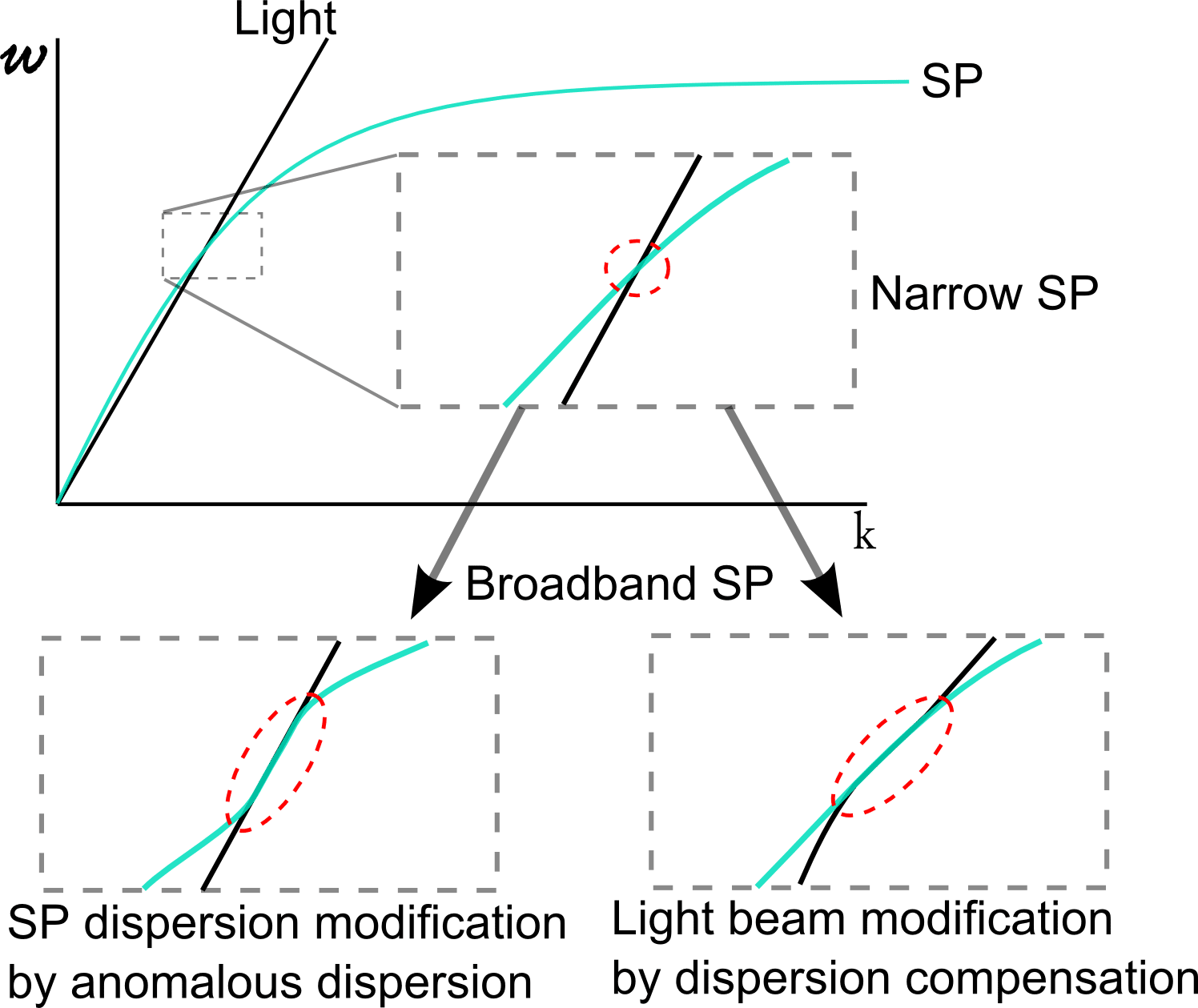
The Broadband Surface Plasmon
A very high sensitivity of the surface-plasmon based sensors stems from the fact that the surface plasmon is a resonance phenomenon. In the Kretchmann’s geometry, optical reflectivity as a function of incident angle exhibits a very sharp dip associated with the excitation of the surface plasmon wave at the metal-dielectric interface. The position and depth of this dip is very sensitive to the properties of dielectric in contact with metal (analyte). In this work we explore a rare scheme of the excitation of the surface plasmon resonance- a wavelength scanning. We demonstrate that the reflectivity may be close to zero in a broad wavelength range while the high sensitivity to the properties of the analyte is retained through the whole wavelength range. The reason behind this is the resonance condition of phase- matching: the phase velocity of the surface plasmon wave VSP shall be equal to the lateral component of the phase velocity of the incident light,. Here, Θ is the incident angle and n is the refractive index of the incident medium. This condition does not involve wavelength (explicitly) and can be satisfied in a wide range of wavelengths.
The broadband surface plasmon can be achieved by dispersion engineering, namely, by the modification of the interface where surface plasmon propagates, or by broadband coupling through dispersion compensation.

We explore these two methods using computer simulation and show how the broadband surface plasmon may be achieved at the Au-water or Au-air interface across the near-infrared range λ=1-3 µm. We demonstrate experimentally the broadband surface plasmon in the Kretschmann configuration at the Au-air interface using a 900 sapphire prism coated with 18 nm thick Au layer and test samples: 5-100 nm thick water and ethanol films. We show the advantages of the broadband plasmon for thin films sensing: spectroscopic measurements in the regime of the surface plasmon resonance and discrimination between continuous and island films. The broadband surface plasmon can be also useful for creation of surface plasmon pulses and for broadband absorbers.
mishaches@gmail.com
Powered by Eventact EMS